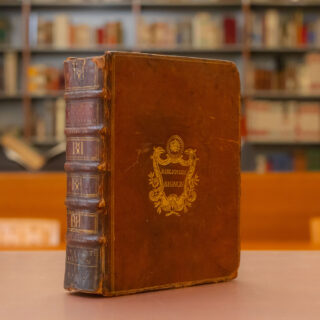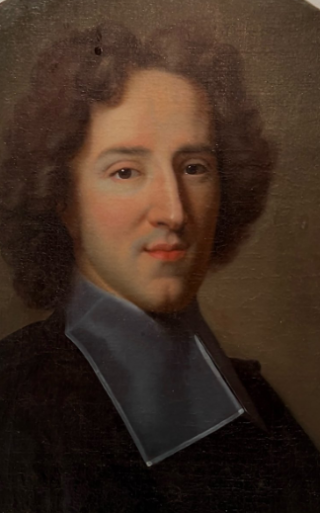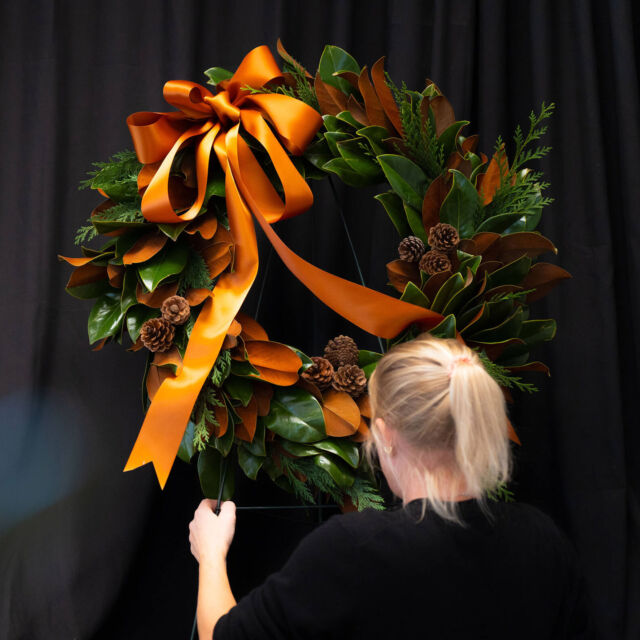The Royal Librarian
Stephen Sinon is the William B. O’Connor Curator of Special Collections, Research and Archives, in the LuEsther T. Mertz Library of the New York Botanical Garden.

A book labeled Bibliothec Bignon, from the library of Abbé Jean-Paul Bignon
Examining the shelves in the Mertz Library’s Rare Book and Folio Room recently, I came across a curious binding stamped in gold with the name Bibliothec Bignon in a cartouche on the front cover and a double ‘B’ cypher on the spine of the book. This book came from the library of the Abbé Jean-Paul Bignon (1662 to 1743), who was a clergyman, diplomat, administrator, essayist, and librarian to King Louis XIV. His protégé, botanist Joseph Pitton de Tournefort, named the plant family Bignoniaceae after him in 1694. Another protégé, Antoine Galland, was the first to translate the story One Thousand and One Nights.
The Bureaux de la Librairie was reorganized by Abbé Bignon in 1699, and in 1718 he was appointed Librarian to the King, Louis XV, who at that time owned the largest library in Europe.The Abbé’s official title was “Master of the Bookshop and Guard of the King’s Library.” He created five departments: prints, manuscripts, books, medals and genealogies.
Bignon evolved a network of correspondents during his tenure which he used to acquire books and manuscripts including the most important works of European scholarship. When he resigned, after 22 years at his post, the Library had 135,000 books, a quarter of which were manuscripts. In 1720, the King’s Library was made accessible to the public, one day a week for three hours. For the first time, the Library published a catalogue in 1736.

Abbé Jean-Paul Bignon (1662 to 1743)
As president of the Academy of Sciences for 16 annual terms, between 1699 and 1732, Bignon greatly animated science in France. His office oversaw the granting of patents to inventors, and also helped to organize scientific missions, such as that of Peysonnel, Réaumur, and Tournefort.
Abbé Bignon had amassed a personal library of 35,000 volumes before he became the King’s Librarian. When he took office, he sold it to the infamous financier John Law (1671 to 1729), who later sold it to Cardinal Dubois (1656 to 1723) in 1723 for the equivalent of $500,000 today. On the death of the Cardinal, the collection was sold for the equivalent of $800,000 to the secretary to the Dutch ambassador, who had it transported to The Hague where it was once again sold at auction in 1725.
The content of the Mertz Library’s Bignon volume is the third edition of a Latin treatise concerning medicinal plants written by Simon Paulli and published in Frankfurt in 1708. It is the first Danish botanical publication whose compilation was assigned to physician, professor, and botanist Paulli by the Danish Collegium Medicum (later the National Board of Health). The text is largely based upon an earlier herbal published by Flemish botanist Dodoens and thus only 224 of the 380 plants described were to be found in Denmark. In 1648, Paulii would also author the first flora of Denmark known as the Flora Danica, not to be confused with the famous later 18th- and 19th-century hand-colored volumes which were painted onto porcelain.
SUBSCRIBE
Enter your email address to subscribe to this blog and receive updates on new posts.











